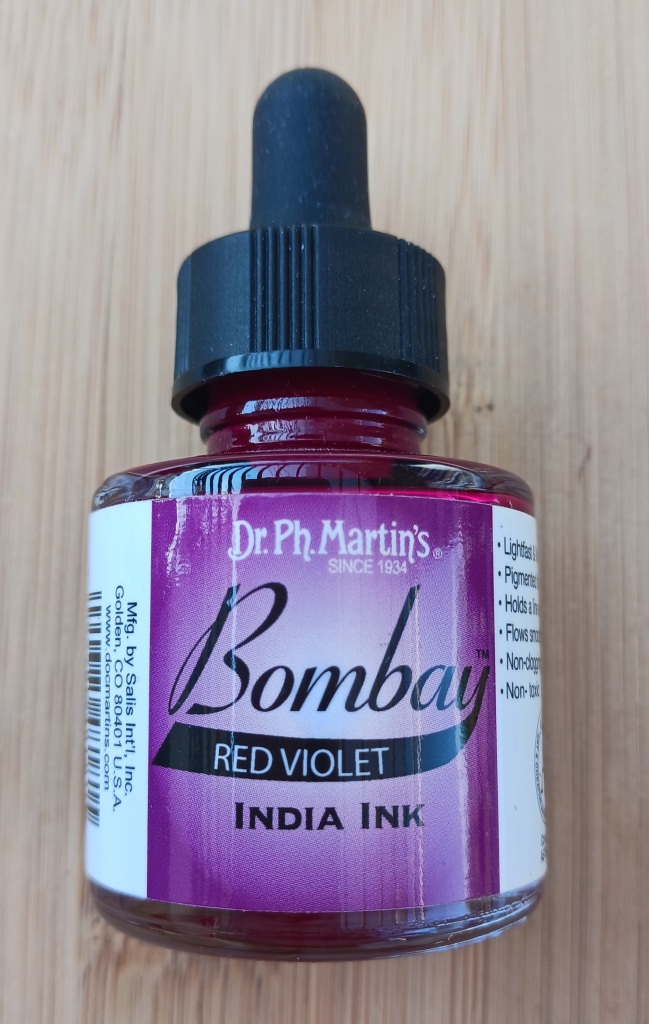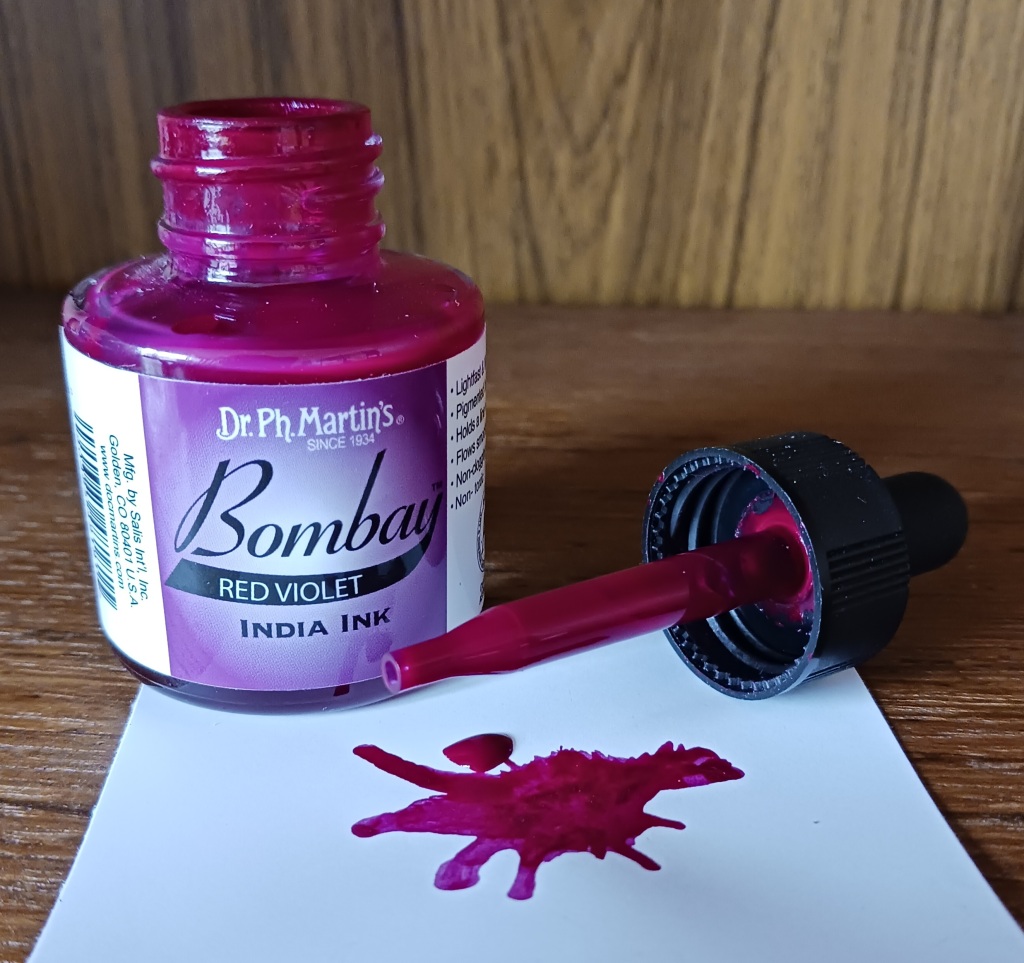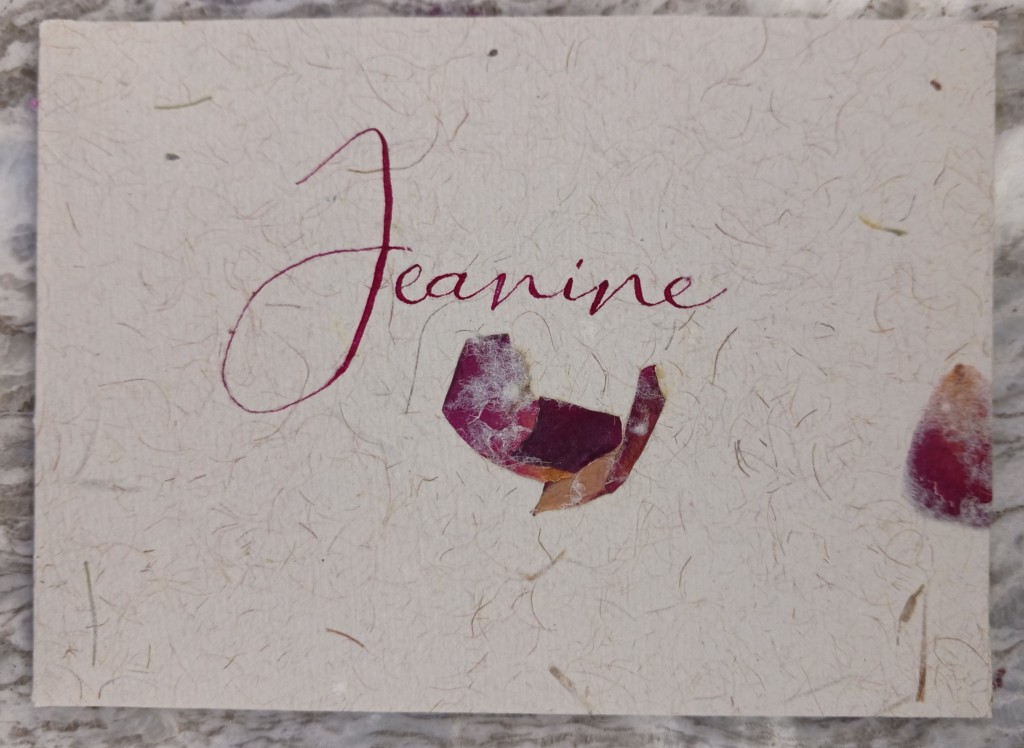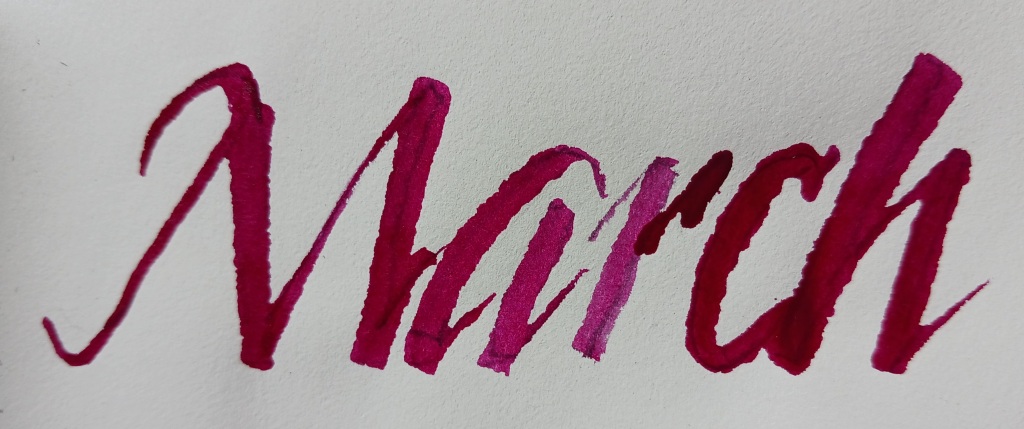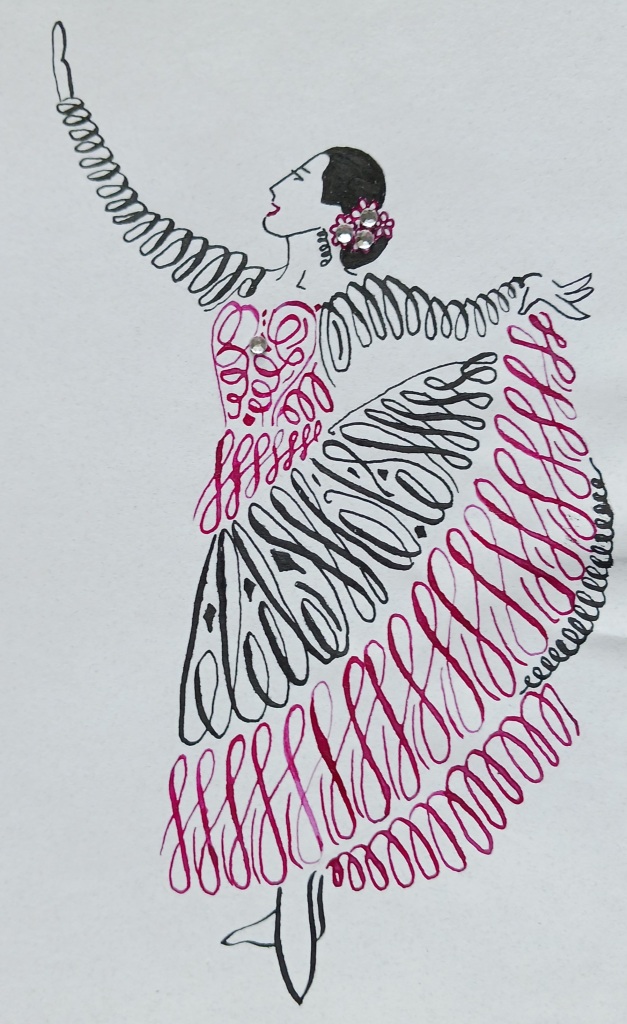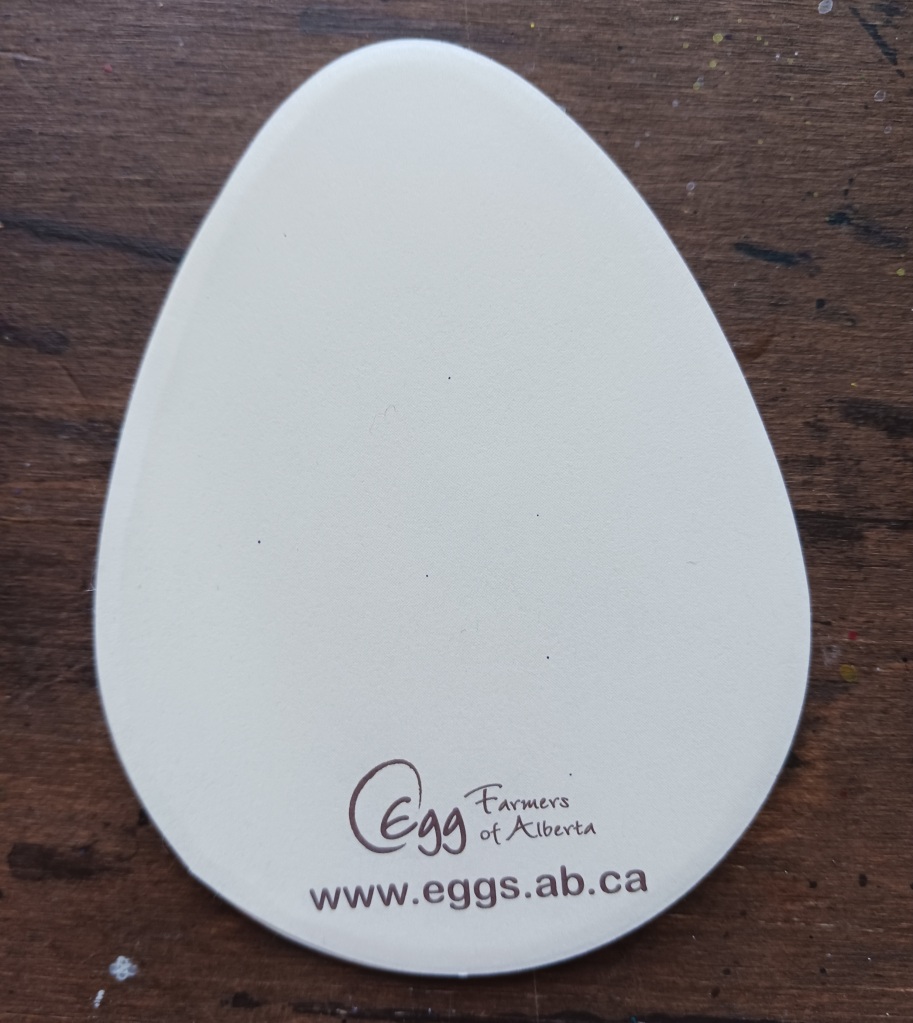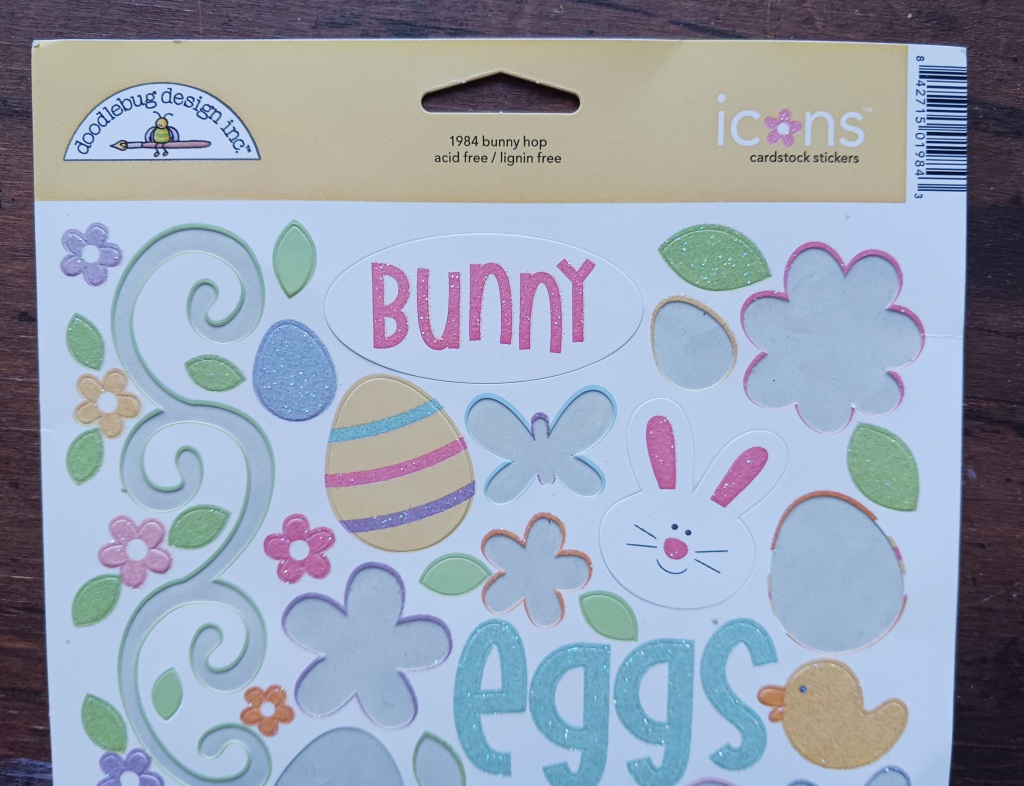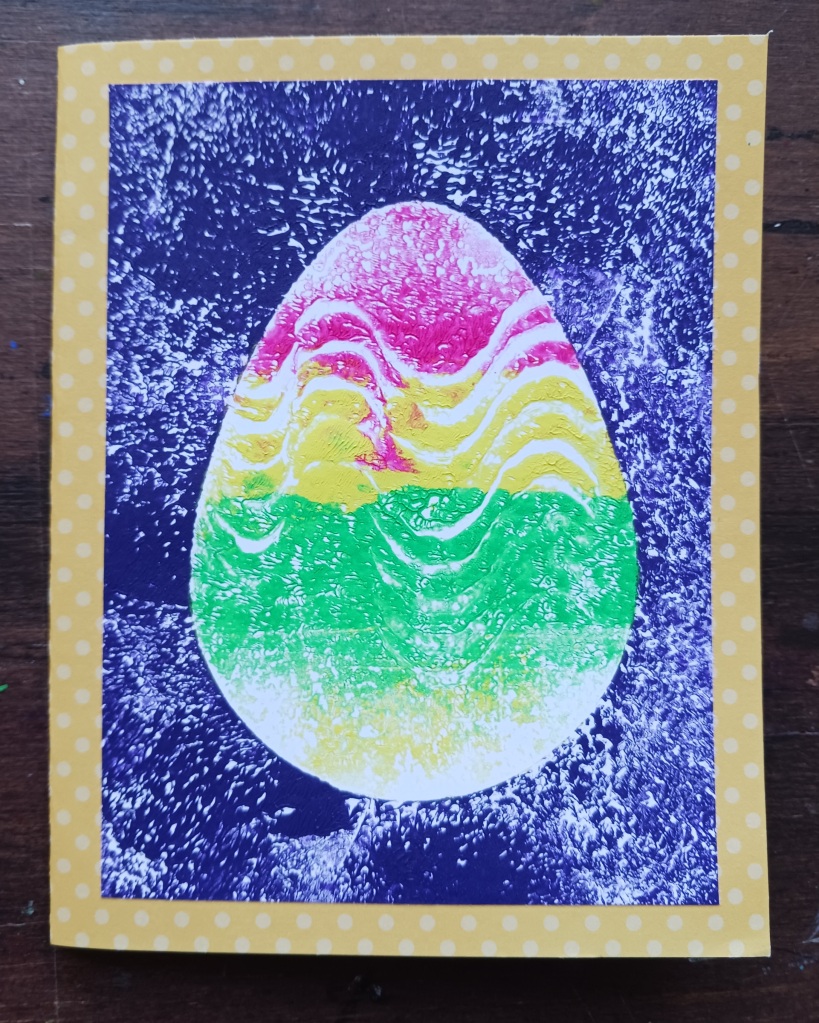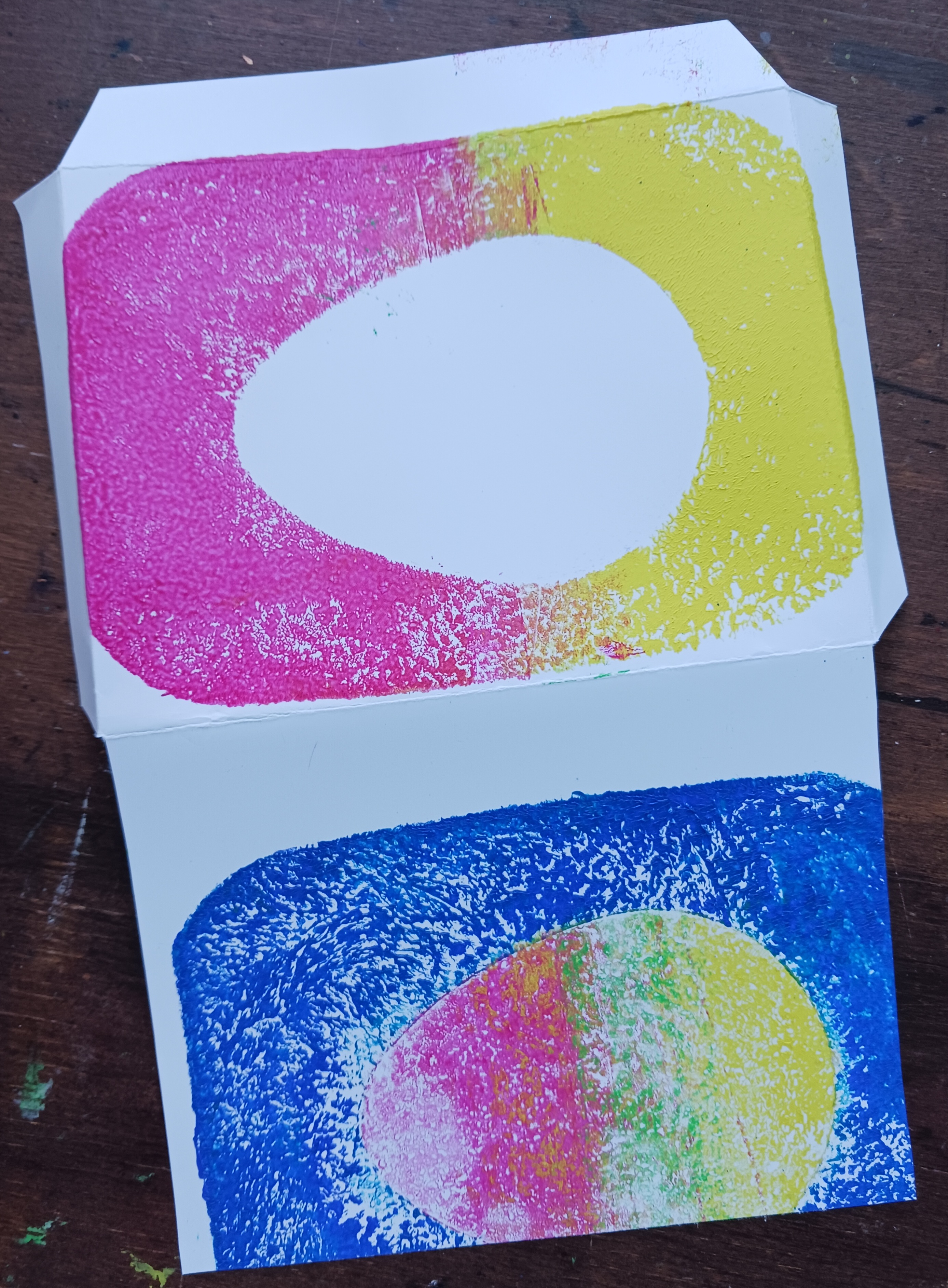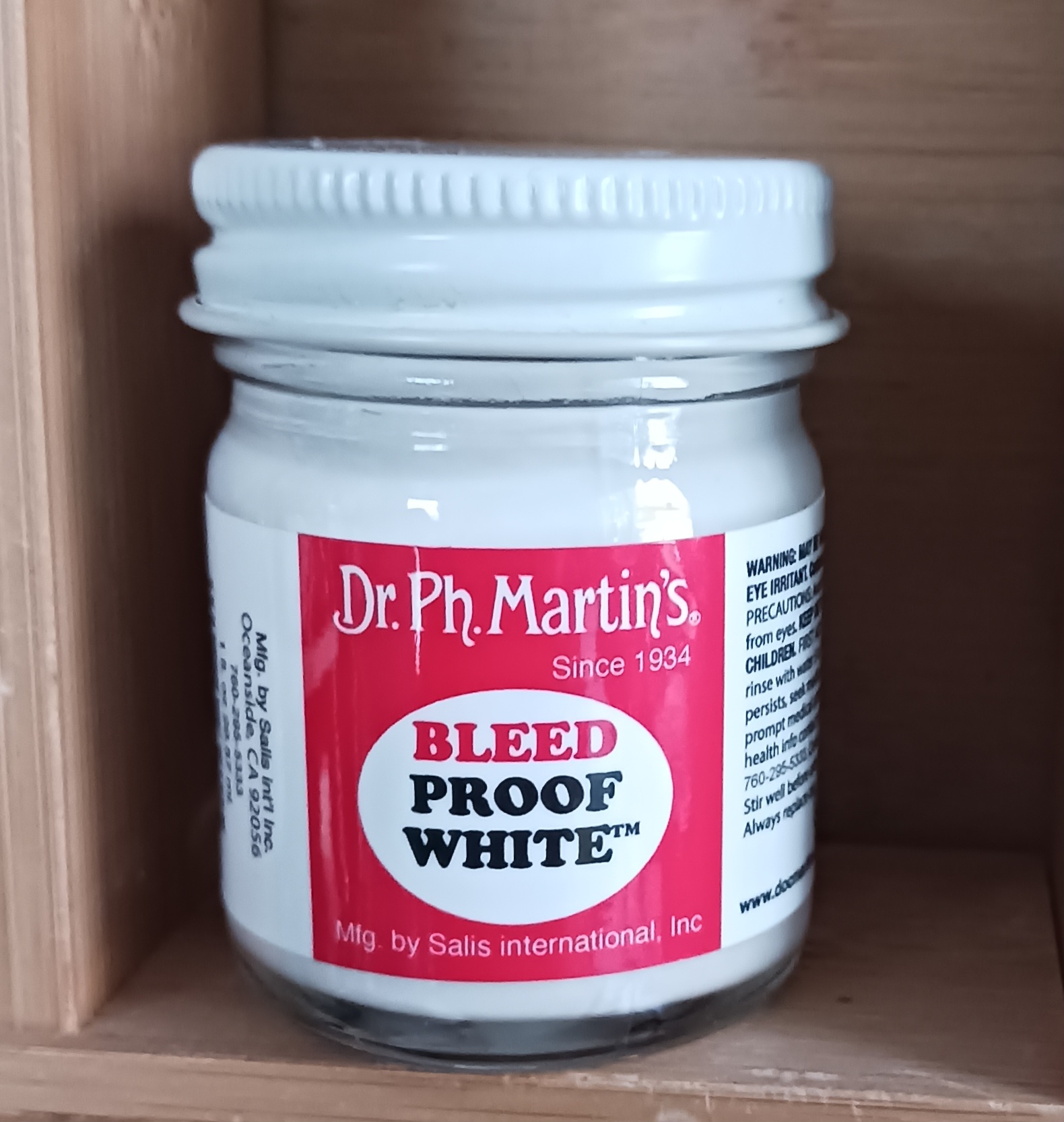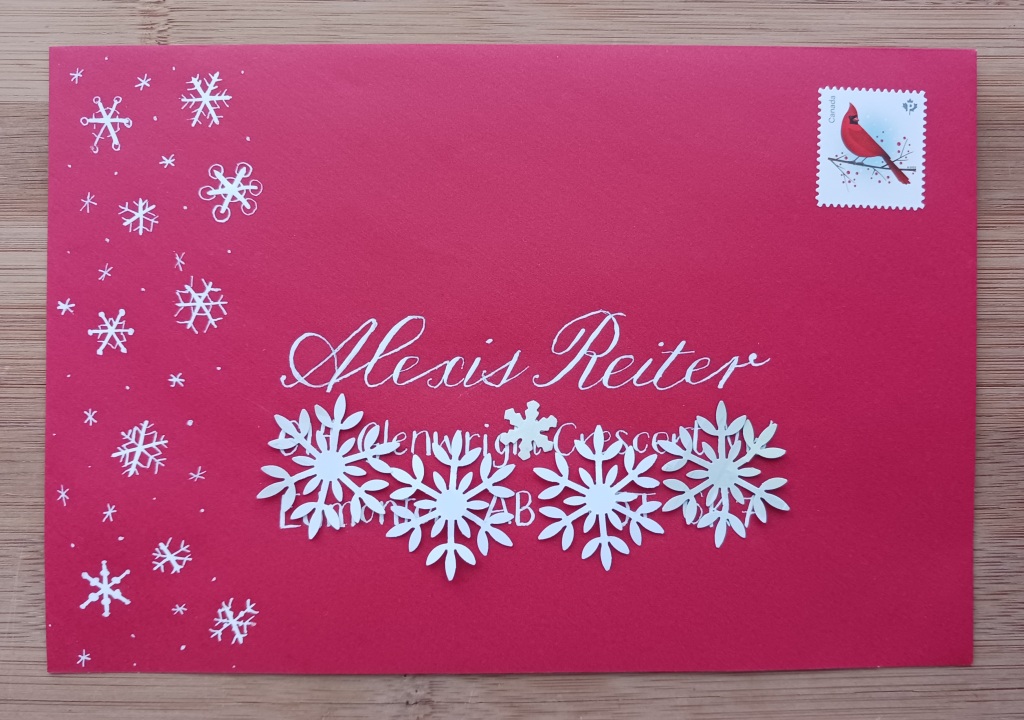
I spent at least as much time addressing and decorating envelopes this year as I did making cards. It would be much more efficient to pick a style and work with it but I love to experiment with different designs.
I had more fun experimenting with embossing powder on some light blue envelopes. I used the asterisk from a set of alphabet stamps to look like snowflakes and then embossed them. I realized I could also put embossing powder on wet ink so I want to experiment some more with that. The calligraphy was done with walnut ink using a Tachikawa G nib.



I used my white Uni-ball Signo Broad gel pen to draw banners and a modern versal on coloured envelopes.


I had some envelopes I knew wouldn’t work for calligraphy so I had fun making a striped design. I have tried this in the past with a smaller envelope where I used a little tag as the mask and only wrote the name on it with the address written between the lines. I had more space on these ones so I put the whole address on the tag shape. After making the first one, I put the stripes on a diagonal and added a thin green line with a Zebra Doodler’z glitter gel pen to give it more of a candy cane look. I used an old Mr. Sketch scented watercolor marker (“cherry”) with chisel tip. Mr. Sketch is a favourite of flipchart users and pre-schoolers. They last a long time (I’ve had mine for over 10 years) but you need to be careful because they do smear.

The Christmas decorations were inspired by one of the cards I shared in my last post. They are just painted with watercolour and addressed using a glitter gel pen.

The tree on the green envelope was painted with Finetec watercolours and the lettering was done with my DecoColor Calligraphy paint marker. Unfortunately, the paint mark started to dry up (the metallic ones never seem to last long) so I highlighted the letters with a glitter gel pen.

On this envelope I did Art Deco style lettering using my Jinhao 992 fountain pen loaded with Pelikan Edelstein Star Ruby ink (this ink is definitely on the pinker side of red).

The triangle tree with writing is a pretty simple concept. I drew it with a pencil and then went over it with Zebra Doodler’z glitter gel pens (I have used them a lot this year).


I found a wax seal with a holly design at the Edmonton ReUse Centre earlier this year so sealed some coloured envelopes with white wax. I never seem to be able to make perfect round seals. I coloured in the holly design with markers afterwards.
If these envelopes were people, they would be a group of carolers who may not always sing in harmony but their message is heartfelt – enjoy your holiday in way that brings you happiness!


